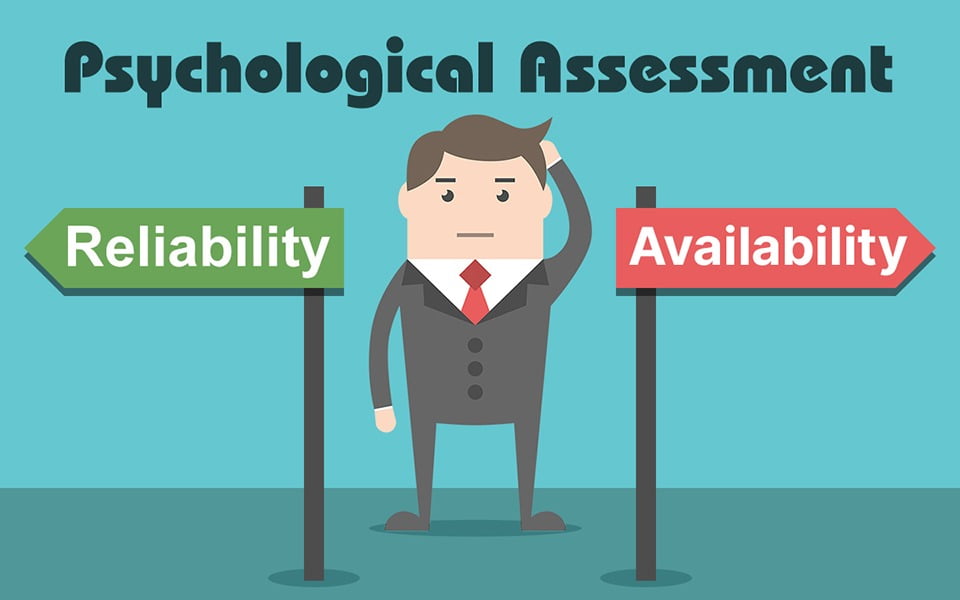Introduction
As the world of finance continues to evolve at a rapid pace, the asset management industry finds itself at the forefront of change. In the face of challenges posed by inflation, volatile markets, and shifting investor preferences, asset managers must adapt and embrace emerging asset management trends to stay competitive. The year 2023 promises to be a crucial time for the industry, as key developments are set to shape the way assets are managed, and value is delivered to clients.
Factors such as inflation and market volatility have long been influential in the asset management space. But while challenges persist, the influence of technology and changing investor preferences cannot be overlooked. Technology continues to revolutionize the industry, enabling asset managers to leverage data analytics, artificial intelligence, and automation to enhance investment decision-making processes. These technological advancements allow for more informed insights, improved efficiency, and better risk management. Plus, investors are increasingly seeking sustainable investment opportunities and demanding greater transparency.
Related article: Asset Lifecycle Management: A Complete Guide for 2023
To position themselves to take advantage of trends and provide value to clients, asset managers need to adopt a client-centric approach and focus on three key aspects: innovation, differentiation, and relationship-building.

Firstly, asset managers should embrace innovation by leveraging technology and data analytics. By harnessing advanced tools and platforms, asset managers can enhance their investment strategies, optimize portfolio management, and provide clients with real-time insights and personalized solutions. Embracing fintech solutions, such as robo-advisory platforms and digital engagement channels, enables asset managers to cater to the evolving needs and preferences of tech-savvy clients. Additionally, adopting emerging technologies like artificial intelligence and machine learning can help asset managers uncover new investment opportunities, streamline processes, and improve risk management.
Secondly, differentiation plays a crucial role in standing out in a competitive market. Asset managers should focus on developing specialized expertise in niche markets or investment strategies. By offering unique investment products or solutions that align with specific client needs, such as impact investing or sustainable finance, asset managers can differentiate themselves from their competitors. Developing a strong brand and reputation for delivering consistent and exceptional results further enhances its position in the market.
Lastly, asset managers should prioritize relationship-building and client engagement. Understanding clients’ goals, risk tolerance, and preferences is essential to provide personalized investment advice and tailored solutions. Regular communication, transparent reporting, and proactive engagement help build trust and strengthen client relationships. By delivering exceptional client experiences and demonstrating a deep understanding of their clients’ needs, asset managers can foster long-term loyalty and referrals.
Challenges of Asset Management
The asset management industry is currently navigating a challenging landscape characterized by various factors. Firstly, the slow return to normal in the wake of the COVID-19 pandemic has created ongoing uncertainties. The pandemic disrupted global economies and financial markets, leading to significant volatility and market fluctuations. Asset managers are grappling with the task of managing portfolios in an unpredictable environment, where the path to recovery remains uncertain and potential risks persist.
Additionally, global supply chain disruptions have added another layer of complexity for asset managers. The pandemic exposed vulnerabilities in supply chains, causing bottlenecks, delays, and shortages in various industries. These disruptions impact asset managers’ ability to assess and forecast the performance of companies across different sectors, creating challenges in constructing well-diversified portfolios.

Furthermore, rising inflation has become a prominent concern for asset managers. Inflation erodes the purchasing power of currencies and affects the value of assets. As inflation rates increase, asset managers must consider its potential impact on investment returns, portfolio allocation, and risk management. They need to navigate the shifting dynamics of inflation to ensure their clients’ investments can preserve and grow their wealth over time.
Geo-political uncertainties further compound the challenges faced by asset managers. Trade tensions, geo-political conflicts, and policy changes can introduce volatility and affect global markets. Shifts in government regulations, tax policies, and trade agreements create an environment where asset managers must constantly assess and adapt their investment strategies to minimize risks and seize opportunities in an ever-changing geo-political landscape.
Hence, to successfully navigate the changing landscape, asset managers need to position themselves strategically to take advantage of these emerging trends and provide value to their clients. This requires embracing technology and leveraging it to enhance investment processes, optimize operational efficiency, and deliver personalized solutions. By harnessing the power of data-driven insights and machine learning algorithms, asset managers can make more informed investment decisions and generate superior returns.
Furthermore, asset managers must proactively respond to changing investor preferences by incorporating sustainable investing practices into their strategies. This not only aligns with growing demand but also helps mitigate risks associated with environmental and social factors that could impact the value of investments in the long run. Building trust and fostering transparent communication with clients will be essential to attract and retain investors seeking ESG-aligned portfolios.
Top 10 Asset Management Trends in 2023
As we enter 2023, experts in the field have identified ten key trends that will shape the asset management landscape, revolutionizing the way firms operate and deliver value to their clients.
Evolving Operating Models
Asset management firms are reevaluating their traditional operating models and embracing innovative strategies to enhance efficiency, reduce costs, and streamline processes. Technology-driven automation, data analytics, and artificial intelligence (AI) are being leveraged to optimize operations, improve risk management, and deliver superior investment outcomes.
Rise of Passive Management
Passive investment strategies, such as index funds and exchange-traded funds (ETFs), continue to gain popularity. Investors are attracted to their low fees, broad market exposure, and simplicity. Asset managers are increasingly incorporating passive strategies into their offerings to meet client demands while ensuring cost-effectiveness.
Active ETFs
The emergence of actively managed ETFs is blurring the line between traditional active and passive management. These funds combine the benefits of active management, such as stock selection expertise, with the flexibility and transparency of ETFs. Asset managers are exploring this hybrid approach to provide investors with more diversified and dynamic investment options.
Emphasis on ESG Integration

Environmental, Social, and Governance (ESG) considerations have moved from the periphery to the mainstream. Investors are increasingly seeking investment products that align with their values and promote sustainable practices. Asset managers must integrate ESG factors into their investment decision-making processes, demonstrate transparency, and deliver ESG-aligned solutions to attract and retain clients.
Focus on Alternative Investments
With traditional asset classes becoming crowded and yields compressed, asset managers are turning to alternative investment options. Private equity, real estate, infrastructure, and hedge funds offer diversification, potential higher returns, and lower correlation to traditional markets. Asset managers are expanding their expertise and product offerings in these areas to meet investor demand.
Personalization and Customization
Investors are seeking personalized investment solutions that cater to their unique financial goals, risk tolerance, and preferences. Asset managers are leveraging technology and data analytics to deliver tailored investment advice and customized portfolios, providing a differentiated client experience.
Robo-Advisory and Digital Platforms
Robo-advisory services, powered by AI and machine learning, are gaining traction. These digital platforms offer algorithm-based investment advice, portfolio management, and automated rebalancing. Asset managers are incorporating robo-advisory capabilities into their offerings to cater to tech-savvy investors and enhance accessibility.
Regulatory Developments
Regulatory frameworks continue to evolve, aiming to enhance investor protection and market integrity. Asset managers must stay abreast of regulatory changes and adapt their practices accordingly. Compliance with evolving standards, such as MiFID II, GDPR, and fiduciary duties, is crucial to maintaining client trust and operating within the bounds of the law.
Embracing Sustainable Finance
The asset management industry is playing a pivotal role in driving the transition to a more sustainable economy. Asset managers are actively participating in impact investing, green bonds, and other sustainable finance initiatives. By aligning their investments with sustainable development goals, asset managers can attract socially conscious investors and contribute to a more sustainable future.
Digital Transformation and Cybersecurity
As asset managers increasingly rely on technology, cybersecurity risks become more prominent. Robust cybersecurity measures and data protection protocols are essential to safeguard client information and maintain operational resilience. Asset managers must prioritize investments in cybersecurity infrastructure and continuously adapt to evolving cyber threats.
Your Path to Digital Transformation
As the asset management industry continues to evolve, it must confront the changing landscape shaped by shifting customer expectations and ongoing challenges. Factors such as fee pressure, evolving investor preferences, and a growing interest in digital engagement are transforming the future of wealth and asset management. In order to thrive in this dynamic environment, companies must adapt, grow, and stay relevant by evolving their business models and adding new capabilities.

To stay ahead of the competition, asset and wealth management leaders need to take strategic actions that align with the changing market. This includes assessing their firm’s readiness to acquire or divest in certain businesses to optimize their offerings and strengthen their competitive position. Additionally, reinventing business models by exploring innovative approaches and diversifying their services can provide a competitive edge. Embracing digital transformation is also crucial, as technology plays an increasingly central role in the industry. Investing in digital capabilities enables asset managers to enhance customer experiences, streamline operations, and provide personalized services that align with changing customer expectations.
Related blog: How Asset Optimization Helps Small Businesses?
In this landscape, developing a robust retail investor strategy becomes paramount. Alternative managers are aggressively targeting new investor segments and reaching out to high-net-worth clients. Asset and wealth management firms must proactively identify and capitalize on opportunities within the retail investor space to drive growth and capture market share. By understanding the unique needs and preferences of retail investors, companies can tailor their offerings, communication channels, and engagement strategies to attract and retain this expanding customer segment.


















